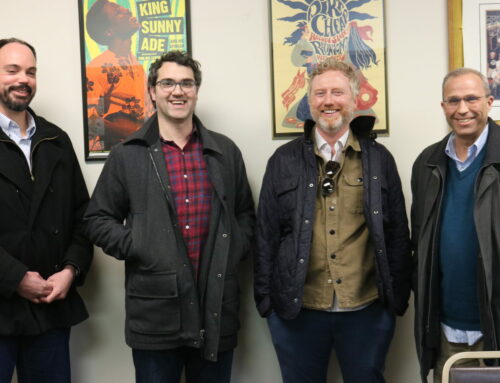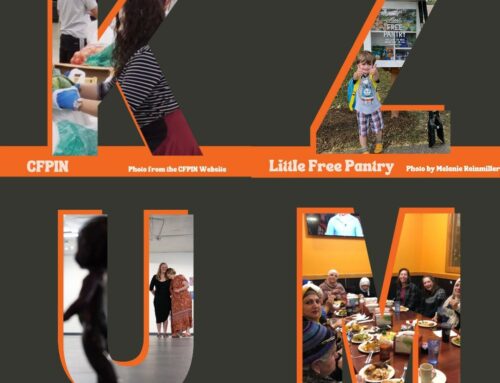By Juliet Bromme
Feb. 10, 2021
Lincoln, Neb. is a community passionate about animal rescue. In addition to the Capital Humane society, several other rescue organizations also exist to find, save and shelter animals. The Cat House, founded about two decades ago, and Dolly’s Legacy Animal Rescue, established in 2013, are both non-profit, all-volunteer based organizations that strive to find safe lodging for animals until they are adopted.
 The Cat House focuses solely on felines. Between their shelter and adoption facility, they care for an average of 150 cats on any given day. However, during kitten season, April through September, the organization receives four to five new litters every month.
The Cat House focuses solely on felines. Between their shelter and adoption facility, they care for an average of 150 cats on any given day. However, during kitten season, April through September, the organization receives four to five new litters every month.
Summer Preuit, director of the short-term fostering program, began volunteering with the organization eight years ago. “I grew up with cats.” Preuit says, “I wanted to get involved as a volunteer. And as soon as I did, it just clicked. Like this was what I was meant to do. I just absolutely love taking care of them.” This “calling” incentivizes many of the individuals working pro bono.
Animal fosterers are people from all walks of life–full-time workers, retirees, college students–and are involved with either the short-term or long-term fostering program. The latter is a program that works with animals that are not great candidates for adoption. The fosterers are committed to providing extra time and attention to cats who are injured or unable to function independently.
Phelps, an energetic black-haired cat, was brought to the facility last June with his brother Usain Bolt. They both quickly found homes in the short-term fostering program, but when it came time to graduate to the adoption facility, it was clear that Phelps, whose hind legs were limp, would require more attention from a caregiver than the average adopter can commit. The long-term fostering program provides a home where he can receive the devotion he needs.
And, despite the disadvantages the coronavirus has presented, rescue organizations have benefited by connecting with more people who are willing to foster kittens, including ones with disabilities like Phelps. Preuit says that in 2020, more people have been able to foster than previous years. With an onslaught of people transitioning into working virtually, they suddenly have the flexibility to feed and nurture the kittens. Additionally, the isolation has proved lonely for many people. “Adoptions are way, way up.” Preuit reveals. “We were kinda concerned that as businesses started opening up again, that some of those adopters might start going into their offices and realize they don’t have the time. But we didn’t see an increase in returns.” Companionship is appreciated in this quarantine status quo.
 Dolly’s Legacy Animal Rescue has recognized a similar pattern. The organization was surprised to experience a surge in April, with adoption and fostering applications surpassing those of January, February and March combined.
Dolly’s Legacy Animal Rescue has recognized a similar pattern. The organization was surprised to experience a surge in April, with adoption and fostering applications surpassing those of January, February and March combined.
Tamy Burnett, cat adoption coordinator at Dolly’s Legacy Animal Rescue, thinks that “for a lot of us, COVID-19 time or not, it is very rewarding to see animals grow, and see them become active.” Without as many social interactions as before, she believes caring for dogs and cats during the coronavirus can be beneficial by connecting with the animal and the greater fostering and adoption community.
This fostering-based rescue receives animals from a variety of states. Because of the successful and stable culture around animals in Nebraska, Dolly’s Legacy prefers to work in places that don’t have the same types of resources, like Oklahoma or Texas. Their capacity to provide places of temporary shelter for animals is limited by their foster base, since they don’t have a central facility. Currently, including fosterers and the other individuals who help the organization, there are about 100 volunteers who are committed to finding loving, safe homes for orphaned and abandoned pets that would otherwise be euthanized.
Though the volunteers at both The Cat House and Dolly’s Legacy Animal rescue agree that fostering placements are meant to be temporary, they aren’t surprised when the environments become permanent. Often, the fosterer becomes emotionally attached to the animal and they end up keeping them. This decently common happening is dubbed as a “foster failure.” However, despite diverting from the original plan, this is also considered a success because it guarantees that the animal has found a safe, loving home.
In fostering, saying “goodbye” is the goal. From personal experience, Burnett knows that’s easier said than done. She smiles, “Sometimes it’s hard, animals can definitely steal your heart, right?”
It turns out, failing isn’t always a bad thing.
Lincoln, Neb. is a community passionate about animal rescue. In addition to the Capital Humane society, several other rescue organizations also exist to find, save and shelter animals. The Cat House, founded about two decades ago, and Dolly’s Legacy Animal Rescue, established in 2013, are both non-profit, all-volunteer based organizations that strive to find safe lodging for animals until they are adopted.

The Cat House focuses solely on felines. Between their shelter and adoption facility, they care for an average of 150 cats on any given day. However, during kitten season, April through September, the organization receives four to five new litters every month.
Summer Preuit, director of the short-term fostering program, began volunteering with the organization eight years ago. “I grew up with cats.” Preuit says, “I wanted to get involved as a volunteer. And as soon as I did, it just clicked. Like this was what I was meant to do. I just absolutely love taking care of them.” This “calling” incentivizes many of the individuals working pro bono.
Animal fosterers are people from all walks of life–full-time workers, retirees, college students–and are involved with either the short-term or long-term fostering program. The latter is a program that works with animals that are not great candidates for adoption. The fosterers are committed to providing extra time and attention to cats who are injured or unable to function independently.
Phelps, an energetic black-haired cat, was brought to the facility last June with his brother Usain Bolt. They both quickly found homes in the short-term fostering program, but when it came time to graduate to the adoption facility, it was clear that Phelps, whose hind legs were limp, would require more attention from a caregiver than the average adopter can commit. The long-term fostering program provides a home where he can receive the devotion he needs.
And, despite the disadvantages the coronavirus has presented, rescue organizations have benefited by connecting with more people who are willing to foster kittens, including ones with disabilities like Phelps. Preuit says that in 2020, more people have been able to foster than previous years. With an onslaught of people transitioning into working virtually, they suddenly have the flexibility to feed and nurture the kittens. Additionally, the isolation has proved lonely for many people. “Adoptions are way, way up.” Preuit reveals. “We were kinda concerned that as businesses started opening up again, that some of those adopters might start going into their offices and realize they don’t have the time. But we didn’t see an increase in returns.” Companionship is appreciated in this quarantine status quo.

Dolly’s Legacy Animal Rescue has recognized a similar pattern. The organization was surprised to experience a surge in April, with adoption and fostering applications surpassing those of January, February and March combined.
Tamy Burnett, cat adoption coordinator at Dolly’s Legacy Animal Rescue, thinks that “for a lot of us, COVID-19 time or not, it is very rewarding to see animals grow, and see them become active.” Without as many social interactions as before, she believes caring for dogs and cats during the coronavirus can be beneficial by connecting with the animal and the greater fostering and adoption community.
This fostering-based rescue receives animals from a variety of states. Because of the successful and stable culture around animals in Nebraska, Dolly’s Legacy prefers to work in places that don’t have the same types of resources, like Oklahoma or Texas. Their capacity to provide places of temporary shelter for animals is limited by their foster base, since they don’t have a central facility. Currently, including fosterers and the other individuals who help the organization, there are about 100 volunteers who are committed to finding loving, safe homes for orphaned and abandoned pets that would otherwise be euthanized.
Though the volunteers at both The Cat House and Dolly’s Legacy Animal rescue agree that fostering placements are meant to be temporary, they aren’t surprised when the environments become permanent. Often, the fosterer becomes emotionally attached to the animal and they end up keeping them. This decently common happening is dubbed as a “foster failure.” However, despite diverting from the original plan, this is also considered a success because it guarantees that the animal has found a safe, loving home.
In fostering, saying “goodbye” is the goal. From personal experience, Burnett knows that’s easier said than done. She smiles, “Sometimes it’s hard, animals can definitely steal your heart, right?”
It turns out, failing isn’t always a bad thing.
Juliet Bromme is a journalism intern with KZUM.





